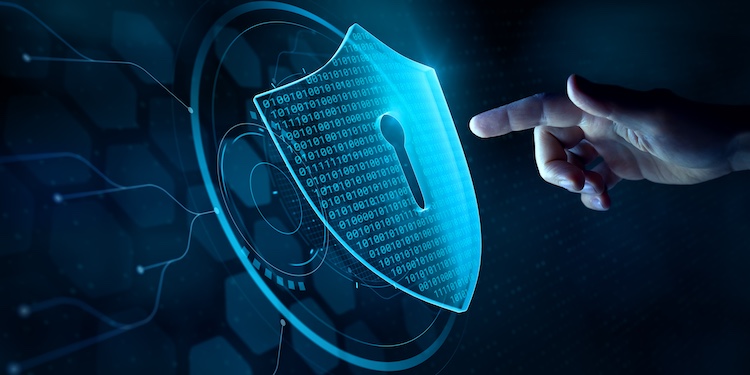In today’s interconnected world, the line between safety and vulnerability often hinges on the robustness of an organization’s cybersecurity measures. Every business, from small startups to large corporations, faces the relentless threat of cyber attacks that can cripple operations, expose sensitive data, and erode customer trust.
This is where the cyber protection condition levels (CPCON) come into play. Developed by USCYBERCOM, these levels are not just theoretical constructs but essential tools that help businesses scale their defenses in real time, matching the escalating pace of cyber threats.
Understanding and implementing CPCON levels means transforming reactive security measures into a dynamic shield to safeguard your enterprise’s most critical assets. Let’s get into how these levels function and why they are pivotal in maintaining not just security, but business continuity in a digital age.
What are Cyber Protection Condition Levels?
Cyber protection condition levels are a structured set of guidelines designed to enhance cybersecurity readiness across various organizations. Developed by USCYBERCOM, these levels serve a crucial purpose in maintaining a state of preparedness against cyber threats.
Each level signifies a different degree of vigilance and protective measures required to defend against potential cyber attacks.
CPCON 5: Routine Readiness
At CPCON 5, organizations maintain basic cybersecurity practices. This level involves continuous monitoring and regular updates to systems and software to ensure they are secure.
For example, companies regularly patch vulnerabilities and conduct basic security training for employees. This level corresponds to normal operations with standard security measures in place.
CPCON 4: Increased Readiness
CPCON 4 indicates a heightened state of alert due to emerging threats. Organizations begin to enhance their monitoring activities and implement additional protective measures.
For instance, there may be an uptick in suspicious activity that warrants closer scrutiny. Enhanced logging and more frequent security audits are common practices at this level.
CPCON 3: Sustained Readiness
When a threat becomes more pronounced, CPCON 3 is activated. At this level, organizations maintain a robust state of readiness with heightened security protocols.
This could include increased physical security measures and more rigorous access controls. Companies might restrict secured entry points to critical areas and enhance authentication processes to prevent unauthorized access
CPCON 2: Higher Readiness
CPCON 2 involves preparing for imminent cyber threats. Organizations implement advanced security measures and may temporarily suspend non-essential operations to focus on defending critical assets.
Emergency response protocols are activated, and all cybersecurity personnel are on high alert. During such times, coordination with government agencies and other organizations may be crucial to mitigate risks.
CPCON 1: Maximum Readiness
CPCON 1 is the highest level of alert. It indicates a severe cyber threat that requires immediate and comprehensive action. All resources are mobilized to defend against the threat.
This level involves maximum protective measures, including:
- Continuous monitoring
- Rapid incident response
- Potentially isolating affected systems to prevent further damage
Organizations operate in a crisis mode, with every effort focused on neutralizing the threat and restoring normal operations.
How CPCON Levels Are Determined
The determination of CPCON levels depends on various criteria and factors. Threat intelligence plays a significant role in this process. Analysts monitor global cyber threat trends, assess vulnerabilities, and evaluate potential impacts on systems and data.
Risk assessments are conducted regularly to identify weaknesses and prioritize areas for improvement.
For example, a significant increase in cyber attacks targeting specific industries might trigger a move to a higher CPCON level. Similarly, intelligence reports indicating a credible threat from a known cybercriminal group could lead to escalated readiness.
Organizations must stay informed about these developments and be prepared to adjust their security postures accordingly.
Cyber events can also impact CPCON levels. These include:
- Data breaches
- Ransomware attacks
- Large-scale distributed denial-of-service (DDoS) attacks
Impact of CPCON Levels on Organizations
Changes in CPCON levels significantly affect an organization’s cybersecurity measures. As CPCON levels escalate, organizations must implement more stringent security controls and allocate additional resources to monitoring and defense activities.
This often involves:
- Increased staffing
- Enhanced surveillance
- The deployment of advanced security technologies
Higher CPCON levels can also have implications for compliance and regulatory requirements. Many industries, such as finance and healthcare, are subject to strict regulations regarding data protection and incident response.
Adhering to CPCON guidelines helps these organizations meet their compliance obligations and demonstrate due diligence in protecting sensitive information.
Adapting cybersecurity strategies in response to CPCON levels is crucial for maintaining resilience. For instance, during a CPCON 2 alert, an organization might implement additional measures to protect its network infrastructure, such as deploying advanced threat detection systems or conducting comprehensive security reviews.
Role of Cybriant in Supporting CPCON Readiness
Cybriant offers a range of services that help organizations align with CPCON readiness requirements. Our Managed SIEM service provides 24/7 security monitoring and actionable threat intelligence to ensure that businesses can detect and respond to threats in real-time. This is crucial for maintaining higher CPCON levels, where constant vigilance is required.
Our Managed Detection and Response (MDR) service focuses on stopping advanced threats at the endpoint. By utilizing advanced threat detection tools and expert analysis, we help organizations maintain the necessary defenses during sustained and higher readiness levels. For example, during CPCON 3 or CPCON 2, our MDR service ensures that any suspicious activity is promptly identified and mitigated.
Cybriant’s comprehensive vulnerability management service enables businesses to visualize, analyze, and measure their cyber risk effectively. This is essential for conducting accurate risk assessments and ensuring that defenses are appropriately scaled to match the current threat landscape.
Our services also include mobile threat defense, which provides continuous monitoring, analysis, and response to mobile threats. This is particularly important for maintaining secured entry and protecting against unauthorized access, especially during higher CPCON levels.
Fortify Your Cyber Defenses
Throughout this exploration of cyber protection condition levels, we’ve demystified how CPCON serves as the backbone for an adaptive cyber defense strategy. From routine vigilance to maximum readiness, each level equips organizations with the foresight and preparedness to thwart cyber threats effectively.
At Cybriant, we take these protocols from conceptual to operational. By integrating state-of-the-art technologies and services like Managed SIEM and Mobile Threat Defense, we ensure your readiness aligns seamlessly with CPCON demands. Our proactive approach not only fortifies your defenses but also enhances your compliance and operational resilience.
Ready to elevate your cybersecurity readiness? Contact Cybriant today and ensure your defenses are as dynamic as the threats they face.



